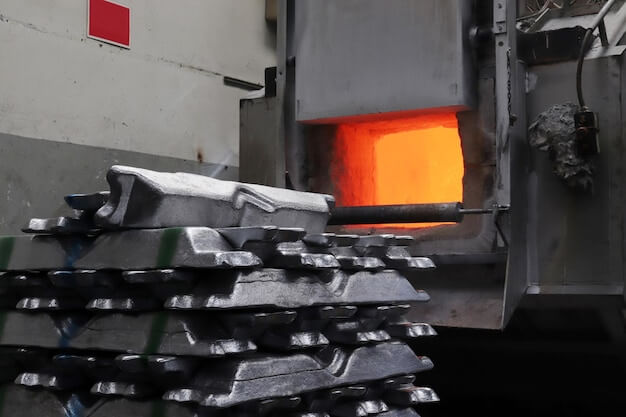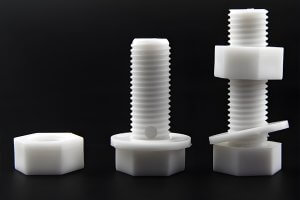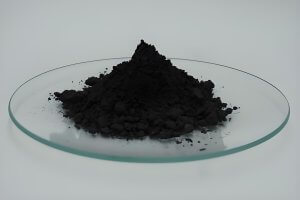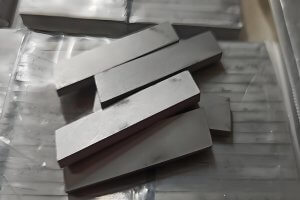Introduction to Casting Processes
Casting stands as a cornerstone in the realm of manufacturing, enabling the creation of complex shapes and designs that would be challenging or impossible to achieve through other methods. Central to its function is the pouring of molten materials into a mold where they solidify into their final form. The selection of a proper casting technique is pivotal; it dictates not only the quality and integrity of the finished product but also affects the efficiency of production and overall costs. Factors such as the properties of the material being cast, the desired precision, scale of production, and economic considerations must all be balanced to optimize the manufacturing outcome.
Sand Casting Description and Materials
Sand casting is a traditional manufacturing process where sand serves as the mold material for metal casting. The primary components of the sand used include silica, clay (as a binder), and water to moisten. This blend creates a refractory mold that can withstand high temperatures. Patterns made of wood or metal are pressed into the sand to create a negative cavity of the desired shape. Once the molten metal is poured into this cavity and solidifies, it forms the cast part which is later removed from the sand mold.
Advantages and Typical Applications of Sand Casting
The process boasts numerous advantages, such as low-cost tooling, suitability for complex geometries, and the ability to cast large components. It’s especially beneficial when small production quantities are needed or for parts that require intricate designs and hefty structures. Common applications range from automotive engine blocks and cylinder heads to hardware like handles and knobs, within industries appreciative of its flexibility and cost-effectiveness.
Example of a Product Made Using Sand Casting
An example of a product manufactured by sand casting would be iron pipes used in plumbing systems. These pipes highlight the sand casting method’s capability to produce durable and robust products with substantial size and weight. Their creation involves pouring molten cast iron into elongated sand molds designed to form the hollow structure of pipes, showcasing how sand casting accommodates both simplicity and complexity in component design.
Investment Casting
Investment casting, also known as lost-wax casting, is a process where a duplicate metal sculpture is cast from an original sculpted model. Initially, a wax model of the desired item is created and coated in refractory ceramic material to build a robust mold. Once hardened, the wax is melted away, leaving a cavity that is then filled with molten metal. Suitable materials for investment casting include stainless steel, aluminum, bronze, and other specialized alloys. The key benefits of this technique are its ability to produce components with intricate details, exceptional surface finishes, and precision tolerances which may not require additional machining. Used widely in aerospace and medical industries, it allows for the creation of complex geometries unachievable by traditional manufacturing means. An example underlining the accuracy of investment casting is the production of turbine blades with complex cooling channels within them, critical to the high-performance requirements of aerospace engines.
Die Casting Equipment and Operation
Die casting is a dynamic process that requires advanced machinery to inject molten metal into precision-engineered molds, known as dies. The equipment typically encompasses a high-pressure die casting machine with two primary components: the injection system for forcing the metal into the die, and the clamping unit for holding the mold shut under pressure until the part solidifies. Metals frequently used in die casting include aluminum, zinc, magnesium, copper, lead, and tin which possess low melting points suitable for this method. One of the standout attributes of die casting is its ability to produce parts at high speed and efficiency, thanks to rapid cooling and extraction of the castings. This advantage makes it ideal for manufacturing applications such as producing complex automotive components where repeatability, durability, and large volumes are essential.
Efficiency Advantages of Die Casting
- Rapid production cycle times
- Minimal post-casting machining required
- High-level automation potential
Real-World Application of Die Casting
In automotive manufacturing, die casting is instrumental in fabricating engine blocks, transmission cases, and various structural components. These parts severely benefit from die casting due to the necessity for precision, strength, and longevity, matched with the demand for consistent replication across vast production runs, expediting the assembly line efficacy while maintaining rigorous quality standards.
Shell Mold Casting Process Characteristics and Material Composition
Shell mold casting is a precision casting process utilizing a resin-covered sand to form a shell-like mold. Materials such as ferrous metals, particularly cast iron and steel, are commonly used due to their compatibility with the heat-cured molds, which provide improved stability. A distinctive feature of this method is the use of a two-piece metal pattern that is heated and coated with sand-resin mixture, hardening on contact to produce a thin but strong shell. The metal pattern halves are then separated, and the shell halves are bonded together before molten metal is poured into the cavity.
Unique Advantages of Shell Mold Casting
The shell mold casting technique offers key benefits including enhanced dimensional accuracy and smooth surface finishes compared to traditional sand casting methods. This process yields higher precision components without extensive machining, saving time and resources in manufacturing. An example of its efficiency can be observed in the production of complex, intricate parts, where shell mold casting achieves strict tolerances that other casting processes may struggle to meet.
Surface Finish Quality of Shell Mold Casting Compared to Other Methods
When evaluating surface finish quality, shell mold casting stands out among various casting processes. Its ability to achieve superior surface smoothness often eliminates the need for post-casting surface treatments. In comparison to die casting or investment casting, shell mold casting’s surface finishes are competitive, though it might slightly trail behind in terms of the absolute refinement offered by these high-definition techniques. However, considering its cost-effectiveness and considerable improvement over basic sand casting, shell mold casting strikes an advantageous balance between quality and economy.
Permanent Mold Casting
Permanent mold casting involves the utilization of reusable molds—typically crafted from metal materials such as steel or cast iron—that accommodate molten material to form certain parts and components. These strong, robust molds offer remarkable longevity, standing up to the thermal stresses of repeated use which makes them a financially savvy choice for mass production. When compared with other methods such as sand casting, permanent mold processes generally facilitate higher production rates due to reduced cycle times, stemming from the absence of the need to constantly recreate molds. However, despite their durability and efficiency in production large quantities, these molds are not infinitely lasting and require maintenance or eventual replacement after a substantial number of cycles.
Plaster Casting: Differences, Suitable Materials, and Limitations
Plaster casting distinguishes itself from other casting methods through its use of a gypsum-based plaster as the mold material. The process involves pouring liquid metal into a dry, refined plaster mold which differs significantly from sand casting where sand is the common mold material. Due to its finer grain size, plaster molds can achieve superior surface finishes and intricate details that might be difficult with coarser grains. Metals like aluminum, zinc, and magnesium are particularly suited for this method due to their lower melting temperatures, reducing potential damage to the mold integrity. Conversely, plaster casting faces limitations regarding materials selection; it cannot typically withstand the high temperatures associated with ferrous metals such as steel, which would cause the plaster mold to break down. Additionally, larger castings tend to be impractical in plaster casting since the brittleness of the dried plaster increases the risk of cracking under stress.
Ceramic Casting
Ceramic casting harnesses the excellent properties of ceramics, notably their ability to withstand extreme temperatures, to create intricate shapes and resilient components. The formation process involves pouring molten material into a ceramic mold which is crafted through a meticulous firing of refractory minerals, allowing for detailed surface finishes and high precision in final parts. Its benefits are most apparent when producing parts that must endure high-temperature environments such as turbine blades or exhaust manifolds, where other materials might fail. One can observe its utility in specialized fields like aerospace engineering, where components not only need to resist thermal shock but also maintain structural integrity under extraordinary heat.
Centrifugal Casting Mechanics
The centrifugal casting process utilizes the mechanical principles of centrifugal force to produce cylindrical parts with pure, defect-free materials. During this process, molten metal is poured into a rotating mold which generates centrifugal force that acts to distribute the molten material uniformly around the die cavity. This force ensures that impurities and inclusions, being less dense, are forced to the inner surface of the cast, which can later be machined away. The integrity of products cast using this method significantly depends on the rotational speed; optimal speeds create enough force for a clean, continuous grain structure, while uneven or incorrect speeds can result in anisotropic properties and potential weak points.
Vacuum Casting Efficiency Gains
In the realm of casting processes, vacuum casting stands out for its role in significantly enhancing production efficiency. The crux of this improvement hinges on the vacuum’s capacity to reduce defects inherently present in conventional casting methods. By extracting air from the mold and preventing oxidation during metal pouring, vacuum casting ensures a higher degree of metallurgical purity and minimizes internal cavities or porosity which often lead to component failure. This meticulous environment fosters precision in complex geometries and intricate details, thereby cutting down on subsequent rework or corrections needed. Industries requiring high-fidelity prototypes or end-use parts, such as automotive or aerospace sectors, frequently turn to vacuum casting to ensure their components meet stringent quality standards while also accelerating time-to-market due to reduced post-casting interventions.
Squeeze Casting
In the squeeze casting process, the interaction between pressure and molten metal is fundamental to its enhanced performance over traditional techniques. By applying high pressure during solidification, this method significantly reduces porosity in the cast part leading to the superior material strength. Consequently, manufacturers benefit financially from an increased yield of usable casts, minimising wastage and reducing the need for subsequent inspection and rework. Squeeze casting’s ability to create denser, more reliable components appeals to industries where structural integrity is paramount, representing a potentially cost-effective solution despite any initial outlay for specialized equipment.
Continuous Casting
Continuous casting stands in contrast to batch processing with its ability to produce cast materials unceasingly over extended periods, enhancing productivity and scalability. This process allows for a constant flow of metal, solidifying between molds as it retains motion—ideal for large-scale production where uniformity is vital. Through examples like steel slab or billet manufacturing, continuous casting’s capability shines, enabling streamlined operations with less waste and improved energy efficiency. Factories can scale up by extending the length of the cooling conveyor or using multiple lines concurrently, providing a testament to this method’s inherent flexibility in adapting to high demand.
Lost Foam Casting
The uniqueness of lost foam casting lies in its ability to create highly complex geometries with precision, utilizing a foam pattern that evaporates upon the introduction of molten metal. Unlike traditional sand casting, lost foam does not require the removal of the core; instead, the foam is consumed during the process, allowing for intricate details and undercuts which are nearly impossible to achieve through conventional methods. This method shines in environments where accuracy and specificity of internal channels or cavities are paramount, such as in aerospace components, where weight reduction without compromising strength is crucial. A notable case study demonstrating the effectiveness of lost foam casting is the production of automotive engine blocks, which consist of numerous passageways and features. Manufacturers have successfully implemented this technology to produce these complex parts with reduced assembly requirements and enhanced structural integrity, highlighting lost foam casting’s prowess in sophisticated applications.
Other Articles You Might Enjoy
- Different types of casting
Introduction to Casting in Manufacturing Casting is a foundational manufacturing process wherein molten material—often metal—is poured into a pre-shaped mold and allowed to solidify, forming a replica of the mold's…
- What’s Vacuum Casting? Process, Design, and Applications
Introduction to Vacuum Casting Vacuum casting is a crucial manufacturing process, especially prevalent in the production of detailed and specific parts. It involves drawing liquid material into a mold under…
- Affordable custom aluminum prototype CNC machining services
China Online aluminum CNC machining services are cheaper China's online aluminum CNC machining services offer cost-effective solutions for high-quality custom parts. By leveraging advanced technology and efficient production processes, these…






